- Home
- slideshows
- miscellaneous
- How to lace up your sneakers 3 different ways for unique looks - a step-by-step guide
How to lace up your sneakers 3 different ways for unique looks - a step-by-step guide
First, make sure both ends of the lace are even

The classic under pattern: Re-lace your shoes for a much cleaner look than out of the box
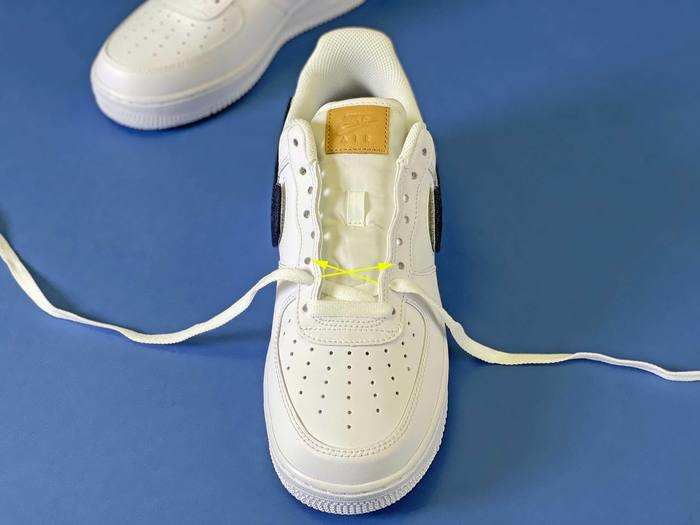
Most shoes come with a standard diagonal-and-under lace pattern, and for a classic shoe like the Air Force 1, I think it's fitting. However, they come out of the box laced super tight, usually very messy, and uneven. To make it look much neater, simply redo it.
Once you've made sure the laces are even, you can start the diagonal pattern going to the second set of eyelets. Start lacing them criss-cross style, with the first lace going over and down into each eyelet, rather than coming up through the eyelets. Be sure to follow the same pattern exactly, so that the lace going to the right side is always under and the lace going to the left is always over (or vice versa).
When you move on to the second shoe, you should follow the same pattern so that both shoes have the laces going in the same direction. If you lace your shoes up and something just doesn't look right, but you can't quite pinpoint it, you probably messed up the pattern somewhere. Consistency is the key to making your sneakers look neat and clean.
The classic under pattern: final results
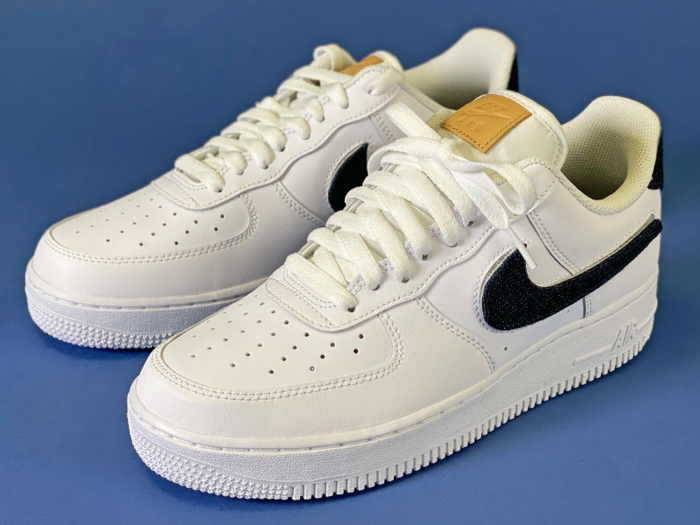
The shoe toward the back is still factory-laced, while the shoe in the front is redone. Although it's the same pattern, the shoe in the front is slightly looser and much neater.
The diagonal-and-over pattern: another easy style
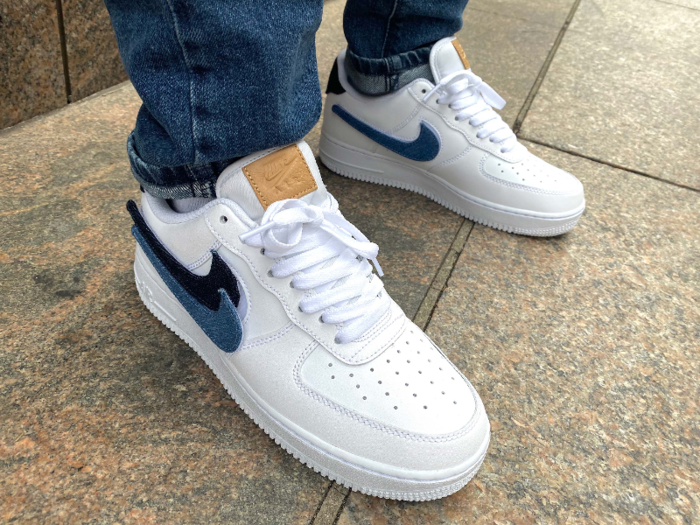
I ultimately went with the diagonal-and-over pattern for my new Air Force 1s, and it's just as easy to do as the diagonal-and-under pattern. Instead of going through the eyelets from the bottom, simply go through the top and remember to follow the same consistent pattern on both shoes. This is a super clean look — far better than any stock brand photo, if I do say so myself.
And if you're wondering about my jeans, they're Mott & Bow's Skinny Warren in Medium Blue.
The loop-back pattern: How to create the loop
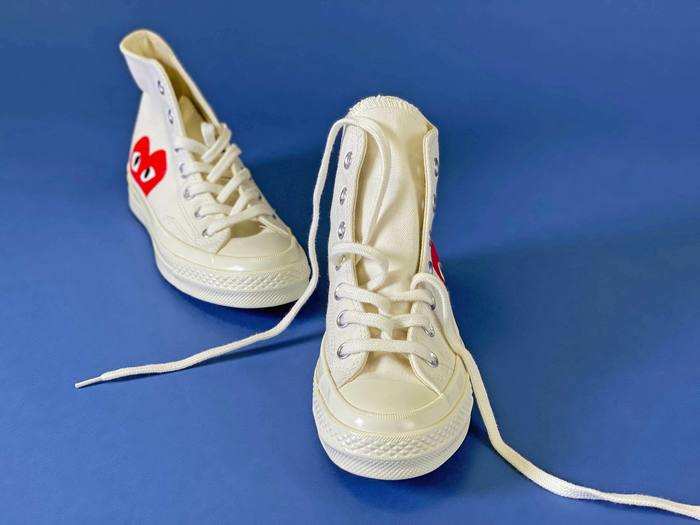
If the standard diagonal-and-under or diagonal-and-over patterns are too basic for you, the loop-back is a cool style you probably won't see others sporting. Instead of going across the tongue of the shoe, the pattern consists of intertwined loops going up both sides of the shoe.
I decided to do this pattern on a pair of Comme Des Garçons PLAY x Converse Chuck 70s I got for my girlfriend. Aside from the solid color Chuck 70s, the CDG collaboration is probably the most popular Chuck 70, so I wanted to do something unique.
In the picture above, you'll see the loop-back pattern completed on the first two sets of eyelets and the next loop ready to continue the pattern.
The loop-back pattern: Put the other end of the lace through the loop
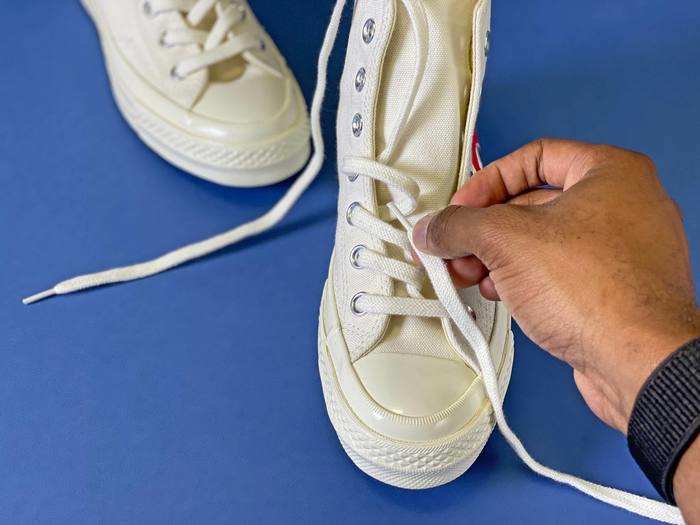
Once you create a loop on one side of the shoe, simply put the other lace through the loop and bring it back to the next eyelet on the same side. After you loop them together, pull them evenly so the point at which they cross is in the middle of the tongue — not too far to the left or right of the shoe.
The loop-back pattern: The end result is a unique weave-like pattern
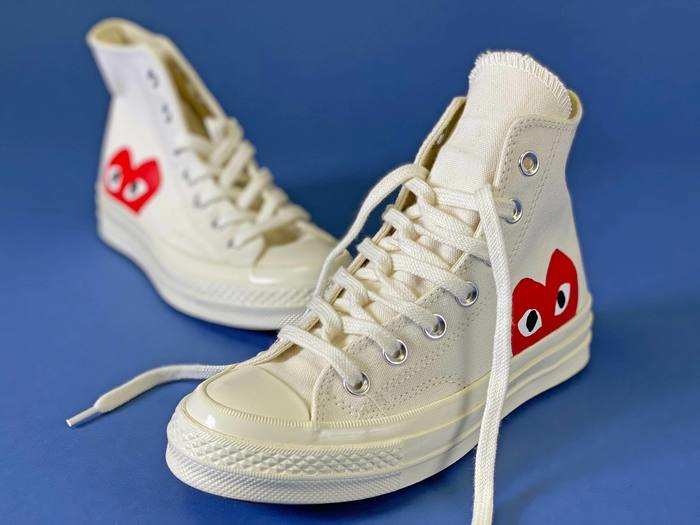
Compared to the normal diagonal-and-over pattern (seen on the sneaker in the background), the loop-back pattern is cool and unique — definitely not something you'll see every day.
In my opinion, Converse are some of the best sneakers for showing off your personality, so any lace style is fair game. The loop-back is one of my favorites though.
The straight pattern: This can be tricky, so pay attention
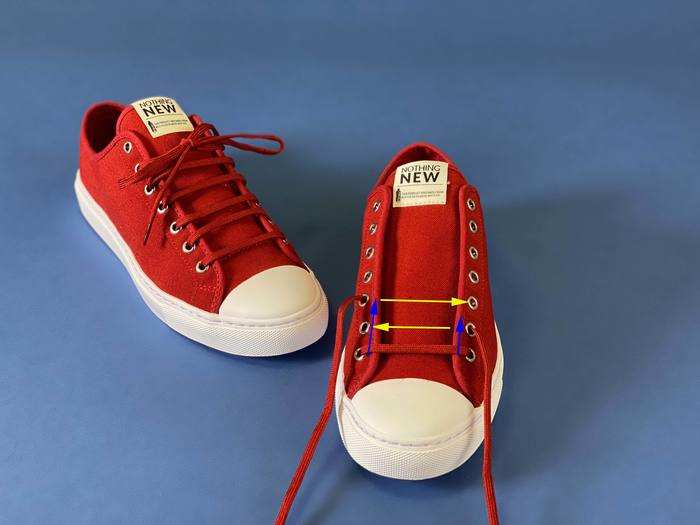
The straight pattern can be a little bit tricky since much of the lacework is hidden underneath the eyelet panels. First, follow the blue arrows in the picture above, which indicate the hidden lacing. Then follow the yellow arrows, which indicate lacing across the tongue.
Note: The shoes pictured above are the Nothing New low tops. They are sustainably made from 100% recycled plastic. Read my full review to learn more about the brand.
The straight pattern: Continue the pattern — you're almost there
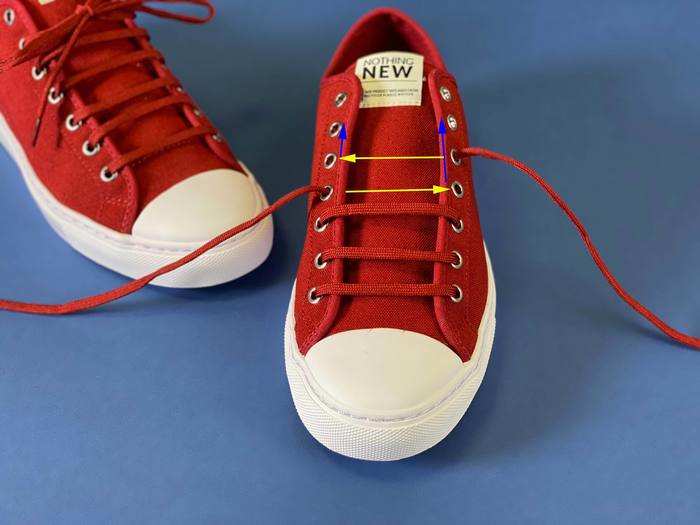
Simply continue the pattern until you reach the top of the eyelets. Since a good portion of the lacework is hidden along the sides of the eyelet panels instead of going across the shoes, you won't be able to tighten the shoes very well by pulling on the laces.
With that said, the straight pattern is good for shoes that you'll only wear casually. If you plan on tightening your shoes for secure lockdown while playing sports or working out, you'll want to lace your sneakers normally.
The straight pattern completed: It's great for casual looks
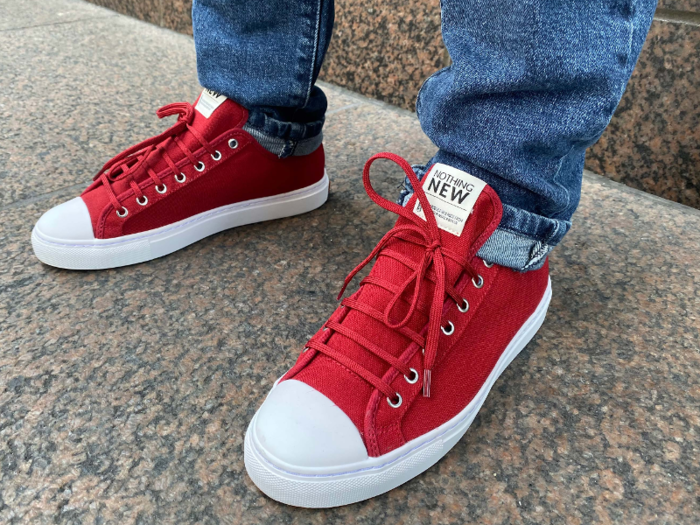
The lacing might be intricate, but the final look is simple and very fitting for a casual shoe.
Where to buy extra laces
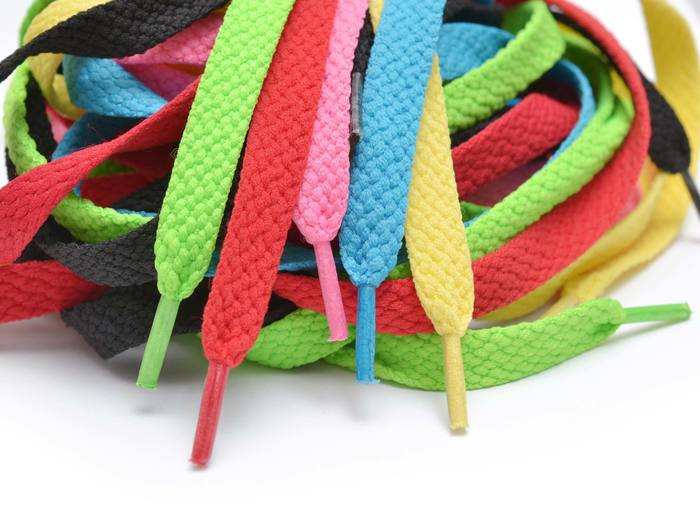
Swapping in different color laces is another great way to add an original look to your sneakers. Shoes sometimes come with extra laces, but more often, they don't. All three sneakers I used in this review didn't come with extra laces.
Whether you're looking for a different color that didn't come included or you're replacing a beat-up pair, Amazon is a solid place to shop.
You'll find a variety of lace styles, colors, and lengths, but one of the best deals is this 20-count variety pack for $9.99.
Typically, 40-inch and 45-inch laces are good for low-tops, while 54-inch laces are good for high-tops and boots. If you're unsure of which length you need, measuring the laces you currently have in your shoes is a fail-safe way to get the right length.
Popular Right Now
Popular Keywords
Advertisement